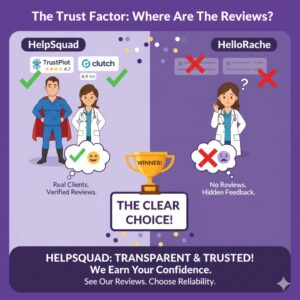Net Promoter Score (NPS)
30 Jan 2024 By: Michael Kansky
Updated
The Net Promoter Score, often just called NPS, is like the heartbeat monitor of customer service. Especially for those companies that are the middlemen handling support for others. It’s this nifty, easy-to-digest metric that gives us the scoop on how customers are really feeling about a business. Imagine it this way: there’s just one question that needs answering, “From 0 to 10, how likely are you to recommend what we do to your buddy or a coworker?” This one question can reveal a lot about whether customers are happy campers or not so much.

Calculating the NPS is like separating fans from critics. First, figure out who’s not thrilled—these are the detractors, giving scores from 0 to 6. Then, find your cheerleaders, the promoters, who rate you a 9 or 10. Subtract the percentage of the critics from the fans. What you get is a score between -100 and 100. The closer you are to 100, the more your customers are into what you’re doing.
History of the Net Promoter Score
Fred Reichheld introduced the Net Promoter Score in 2003. He shared it through a Harvard Business Review article called “The One Number You Need to Grow.” Reichheld challenged the old ways. He said long customer surveys didn’t truly show how customers acted. He proposed NPS as a simpler, better approach.
Since then, the NPS has become widely popular. Many companies across different industries use it as a key measure. It’s also been the focus of lots of studies. These studies generally support Reichheld’s claims about its value.
Boost your business—master Customer Acquisition now!
Development of the NPS
Reichheld’s journey to the NPS started with a massive research project. He looked at over 4000 customers across various sectors. His big discovery? Asking people how likely they were to recommend a business was the best way to guess customer loyalty and future growth.
He also figured out that customers fall into three groups: promoters, passives, and detractors. Today, this way of sorting customers is key to how NPS works.
Adoption and Use of the NPS
After Reichheld’s article hit the shelves, companies jumped on the NPS bandwagon. Now, it’s everywhere—from fresh startups to the giants in the Fortune 500.
Customer service outsourcers are big fans, too. They use NPS to check on how they’re doing and to show their clients they’re worth their salt.
Understanding the Net Promoter Score
The NPS asks one thing: “Would you recommend us to someone, on a scale of 0 to 10?” Scores of 9-10 mean promoters – they love you. Scores of 7-8 are passives – they’re okay with you. Scores of 0-6 are detractors – they’re not happy.
To get your NPS, subtract detractors from promoters. The score goes from -100 to 100. Above zero? More lovers than haters. Below zero? More haters than lovers.
Interpreting the NPS
NPS is about comparison. You should stack it up against scores from similar companies. A 50 is awesome for most, but just so-so in super happy industries.
Remember, NPS isn’t the end-all-be-all. It misses stuff like price or product quality. So, mix it with other data to get the full picture.
Using the NPS to Improve Customer Service
NPS helps boost customer service. By spotting the detractors, businesses can fix their issues. This improves customer loyalty and attracts more customers, helping the business grow.
Outsourcing companies use NPS to show their worth to clients. Improving NPS proves their services are effective.
Trending Now
A CMSWire article highlights the revolutionary impact of generative AI on customer experience metrics including Net Promoter Score (NPS). By harnessing the power of large language models, businesses can deeply analyze customer feedback to improve NPS. While AI-driven omnichannel chatbots enhance CES by streamlining customer interactions and anticipating needs. Moreover, AI’s ability to parse through extensive customer data aids in pinpointing and addressing issues, thus elevating customer satisfaction. This synergy of AI technologies not only advances these specific metrics but fundamentally transforms the overall customer experience. Reinforcing the critical role of AI in cultivating positive brand perceptions and fostering customer loyalty.
Explore AI & automation in BPO for game-changing efficiency!
Advantages and Disadvantages of the Net Promoter Score
Like any metric, NPS comes with its ups and downs. Knowing them helps businesses use it smartly and dodge any drawbacks.
Its big plus? Simplicity. The score is straightforward, perfect for getting everyone on the same page. Plus, it’s super actionable. It points out exactly which customers to focus on for follow-ups.
Advantages of the NPS
NPS has more perks. Being standardized, it’s a breeze to compare with others or the average in your industry. This offers a clear view of where you stand among competitors.
It’s also a growth booster. Studies show companies with high NPS often outpace rivals. Why? Promoters stick around, buy more, and bring in new folks.
Elevate your brand—transform your customer experience today!
Disadvantages of the NPS
Critics of NPS say it’s too simple. It boils down loyalty and satisfaction to just one number, missing the finer details.
They also argue it’s easy to game. Some businesses might only ask their happiest customers, pumping up their scores unfairly. This can give a misleading sense of doing well.
“If you’re competitor focused, you have to wait until there is a competitor doing something. Being customer-focused allows you to be more pioneering.”
– Jeff Bezos
Best Practices for Using the Net Promoter Score
NPS is not limited to evaluating customer feedback. It also extends to understanding the employee experience. Employee sentiment can impact customer interactions, potentially leading to lower scores or a negative score. Thus, companies are increasingly adopting NPS as a common metric to assess and improve internal satisfaction. Which in turn, supports external customer satisfaction.
Survey Design and Administration
First off, don’t rely on NPS alone. Mix it with other metrics and data to get a full picture of customer satisfaction and loyalty. When setting up the NPS survey, stick to the rules. Use the same scale throughout, steer clear of biased questions, and make the survey a breeze to fill out.
Also, make sure to survey a wide mix of your customers. This ensures your NPS really captures the true vibes from your customer base.
Follow-Up Actions
After rolling out the NPS survey, acting on the feedback is key. Touch base with the detractors to sort out their issues, and use the promoters to spark referrals and good buzz.
Keeping an eye on how your NPS shifts over time is crucial too. It shows you the trends and how well your customer service moves are working.
Boost your business with top-notch Outbound Customer Service!
Conclusion
In conclusion, the Net Promoter Score is a powerful tool that transcends its role as a mere metric, influencing various aspects of business operations from customer experience management to employee engagement. By harnessing the full potential of NPS, businesses can achieve long-term growth and sustain a competitive edge in their respective industries.
For those in customer service outsourcing, NPS stands as a crucial benchmark and a means to showcase their worth to clients. By getting to grips with NPS and putting its concepts into action, companies can boost their effectiveness and play a big part in their clients’ triumphs. Elevate your business efficiency and customer satisfaction with our professional virtual assistants and round-the-clock customer service team. Start your trial today and experience the future of BPO with HelpSquad!


